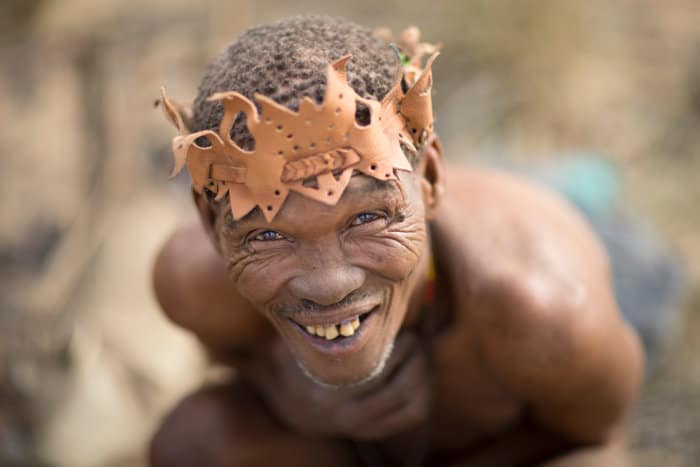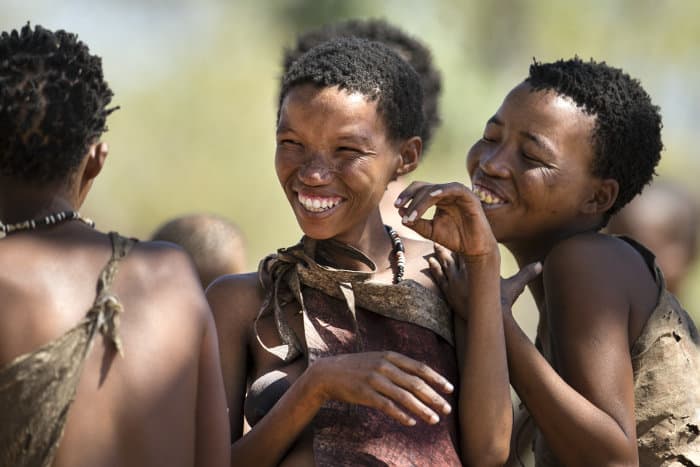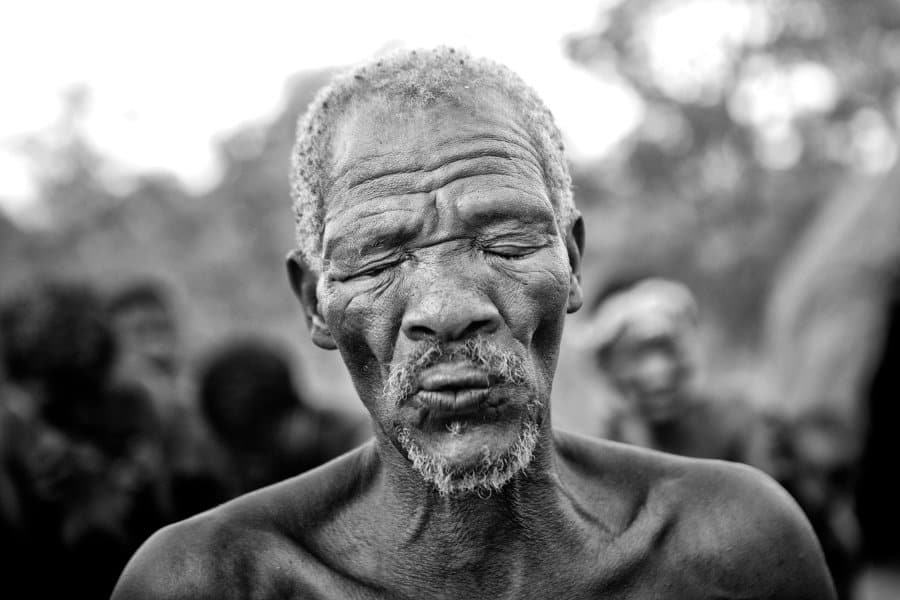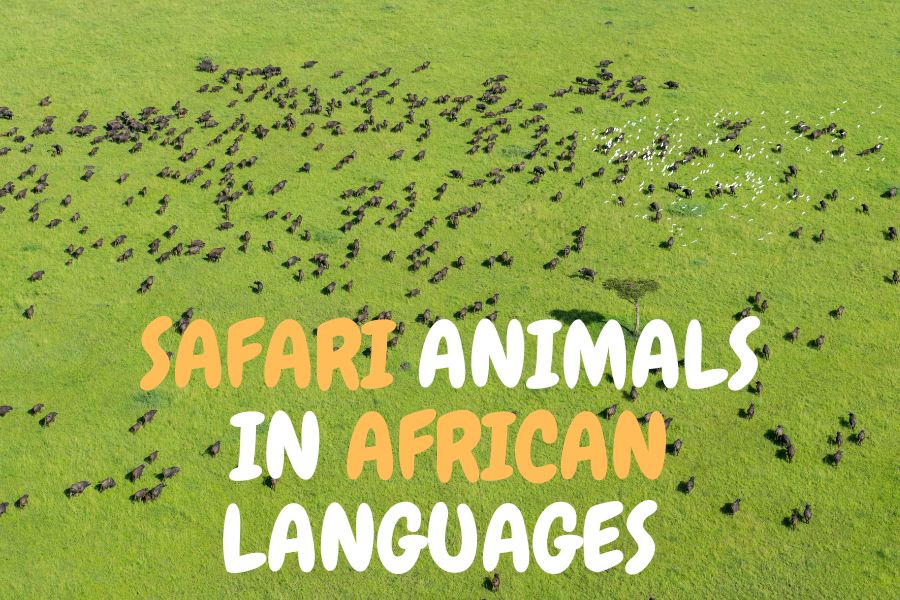Many of us are familiar with the use of clicking sounds. Whether that be a disapproving ‘tsk’ or a clicking encouragement to a horse. Perhaps it’s as simple as a click used to imitate sounds such as a knock on the door.
Clicks can mean a lot of different things, to a lot of different people.
For English speakers, it can be hard to imagine that a simple click could have so much meaning. But for Khoisan people, a sentence is useless without the click of a tongue.
In some cases, a click makes up as much as 70% of their spoken language. So you can only imagine how big of a role it plays in communication.
Let’s find out how a simple click has managed to make its way into spoken languages.
What is a Click Language and How Do You Use It?
Did you know that today, click consonants are only found in certain African languages?
There is, however, a special case that involves the Lardil of Northern Queensland, Australia. But these clicks are only used for day-to-day communication.
So what actually are click languages?
They’re a group of languages that incorporate clicks into a portion of consonants of the language. Speakers produce a distinctive and crisp popping or smacking sound that’s created from the tongue and the roof of the mouth.
Clicks can also sound similar to a sucking sound, created from the lips. One of the clicks used by Khoisan people even resembles the sound of kisses blown.
Just like sounds such as ‘sh’ form an integral part of many languages, so does the alluring click sound. They are all part of a word’s meaning and pronunciation.
African clicking languages: how many are there?
Today, 24 to 38 living languages make use of the multiple click consonants. There’s a bit of confusion regarding the actual number, because of the click used in either a language or in a dialect.
While the click is an extensive and defining feature of the Khoisan languages, the use of clicks has spread quite significantly, due to the increased movement of people around the African continent.
Popular tongue clicking languages such as Zulu, Xhosa, and Sotho are the most widely known, especially in South Africa. Yet there are also other languages found in Botswana and Namibia such as Gciriku, Yei, and Mbukushu.
The click is even incorporated in a Cushitic language as far as Kenya.
Characteristics of a click language
While the meaning and sentence structure vary, there are generally 5 recognizable clicks. Languages such as Zulu and Xhosa make use of three of the five kinds of clicks.
But those simple 5 clicks can add a lot to a sentence. Pair them with vowels, tones, and other constants and you’ve got a wide variety of sounds and meanings.
In all of the Southern African Khoisan languages, a simple rule applies to using the sound. All of the clicks must appear at the start of a word, followed by a vowel.
Between these vowels of a word, there is only room for a small selection of consonants. They are B, L, M, N, and R. If a word were to end in a consonant, it can only be M or N.
Khoisan Language: Language Families of Africa

The Khoisan languages gain a lot of worldwide attention because of how unusual, as well as unique it is as a form of language.
Colloquially speaking, the Khoisan language is a cluster of click languages.
The once-thriving languages made an appearance across all of Southern Africa. Stretching as far as Angola to Swaziland and the Cape of Good Hope.
But as with most languages, variations started to become more scarce. Leading to the eventual extinction of many of the Khoisan languages from the 18th, 19th, and 20th centuries.
The !Ora language being one of them.
Economic pressures, social settings, linguistics, and demographics have all played a role in marginalizing smaller indigenous tribes and communities.
Sadly, the loss of language is an effect of an ever-changing society.
Many bilingual Khoisan speakers have chosen to adopt the dominant language in the area, which is often not their native tongue. And with communities shrinking and the world bearing in on them, it’s no surprise.
Why did the clicks in the Khoisan languages originate?
The question as to why clicks are part of Khoisan languages goes back a long time. And unfortunately, there’s no ‘one-size-fits-all’ kind of answer.
The romanticized version of history shares one story. It has led many people to believe that cultures adopted clicks during their hunter-gatherer days. For instance, San people used the clicks to communicate with each other during a hunt.
This is not entirely correct.
How successful would a click be to communicate with one another when hunting? Surely a soft whisper would be a better alternative. Plus, a loud click can resemble the cracking of a tree, which in the end might scare off their dinner.
Click language in Africa: it may be the oldest language in the world
Clicks may have appeared in the early groups of humans, dating back 50,000 years ago! Because languages change so rapidly, it’s tough for scientists and linguistics to determine how long a language has existed.
There is reason to believe that the click languages may be very old indeed. Take the Ju|’hoansi, a group of hunter-gatherers of the Kalahari, as an example. As an extremely ancient line of descent, they can tell us a lot about the creative burst of language.
Their roots date back as far as the very beginning of the human family tree. When humans first became known as humans.
We know that language came with the development of art of tool making, so evidence of these remains is another indication of language use.
Because the Ju|’hoansi are click speakers themselves, we can assume that the entire language is ancient.
The Hadzabe is another ancient culture that dates back to the first roots of the human family tree. They too are a click language-speaking lineage.
Those with the language gene, and ability to communicate with language, would have outcompeted other tribes. In the process, the click most likely had the chance to survive for many years.
Origins of other African language clicks
It’s important to note that Niger-Congo languages, like Xhosa and Zulu, are completely unrelated to the Khoisan languages. So then how is it that the click has managed to traverse through cultures?
Research suggests that the inclusion of clicks in other African languages is a result of cross-tribal marriages.
Scholars have thought that Xhosa and Zulu speakers slowly adopted the clicks. Specifically when in social situations and by having children who picked up on the two cultures’ way of speaking.
However, this leaves one with some questions. Would children unconsciously merge two languages?
Would that even be possible? Studies say that children who are well-socialized often pick up on accents of their school friends, rather than parents who they see daily.
Hlonipha: Zulu and Xhosa clicks
Another fascinating theory is one called ‘hlonipha’. Hlonipha is a traditional kind of avoidance speech done to show respect and politeness. In Bantu cultures such as Xhosa and Zulu, there are certain names that are not said, with the purpose of simply being respectful.
A daughter-in-law, for example, can never say her father-in-law’s name, nor is it ok to say words rooted in the name. So how would you communicate about someone or something’s name that you could not pronounce?
Cultures came up with an interesting and completely wonderful solution. Simply replace the syllables with a click.
How Do You Write African Language Clicks?

So how does one spell a sound? Well, it’s as easy as spelling a word if you know what you’re working with.
When it comes to the Khoisan languages, a few variables are well-established to spell click phonemes. These variables are ʘ, ǀ, ǁ, ǃ, and ǂ, and just like the letters in the alphabet, they’ve appeared in text for thousands of years.
A vertical bar called a pipe, is what signifies the iconic click in Ju|’hoansi.
Besides exclamation marks and other interesting symbols, Roman letters make a more familiar appearance in Niger-Congo languages.
Zulu and Xhosa people use letters such as C, Q, and X to indicate a click.
African Languages with Clicks: An Ancient Tale
Do these languages that we speak of hold a secret tale as to what life was like in ancient cultures? Although languages are always changing, the click has survived thousands of years.
For centuries, the Khoisan people and their languages thrived. Unfortunately not so much today. As well as the culture, the language shows us how resourceful humans can be in their desire to communicate.
While it’s challenging to know exactly what the Khoisan language looked like hundreds of years ago, the tale is just as spectacular.



I am an author writing a book about an alien species that uses pops and clicks in their language. It isn’t based on any of these African languages, so my characters can’t use their communication tools to learn that language. But I have the alien understanding and learning English. How easily do native Africans such as the Zulu and Khoisan learn other languages? Are there languages that come more easily, say Spanish or Mandarin?
Thank you in advance for your help on this topic.
Darlene Milner